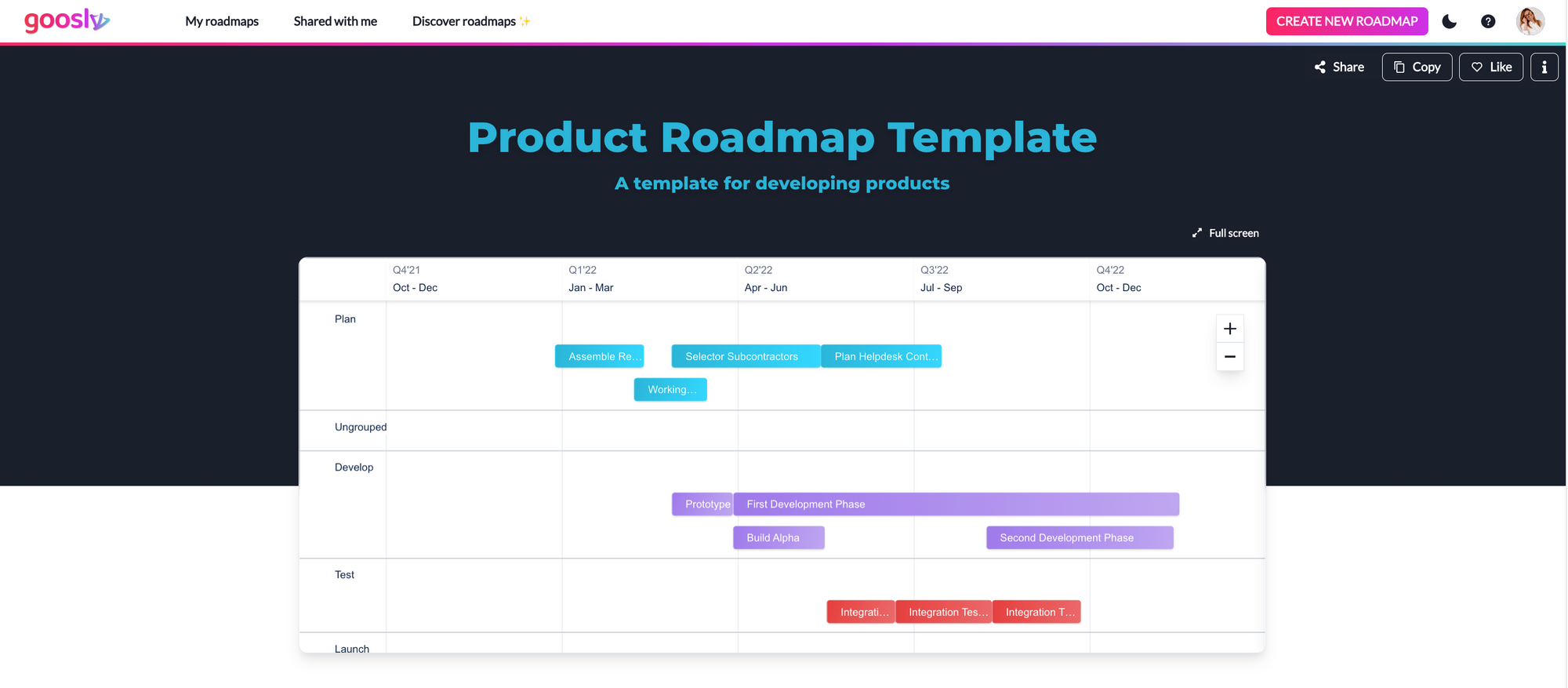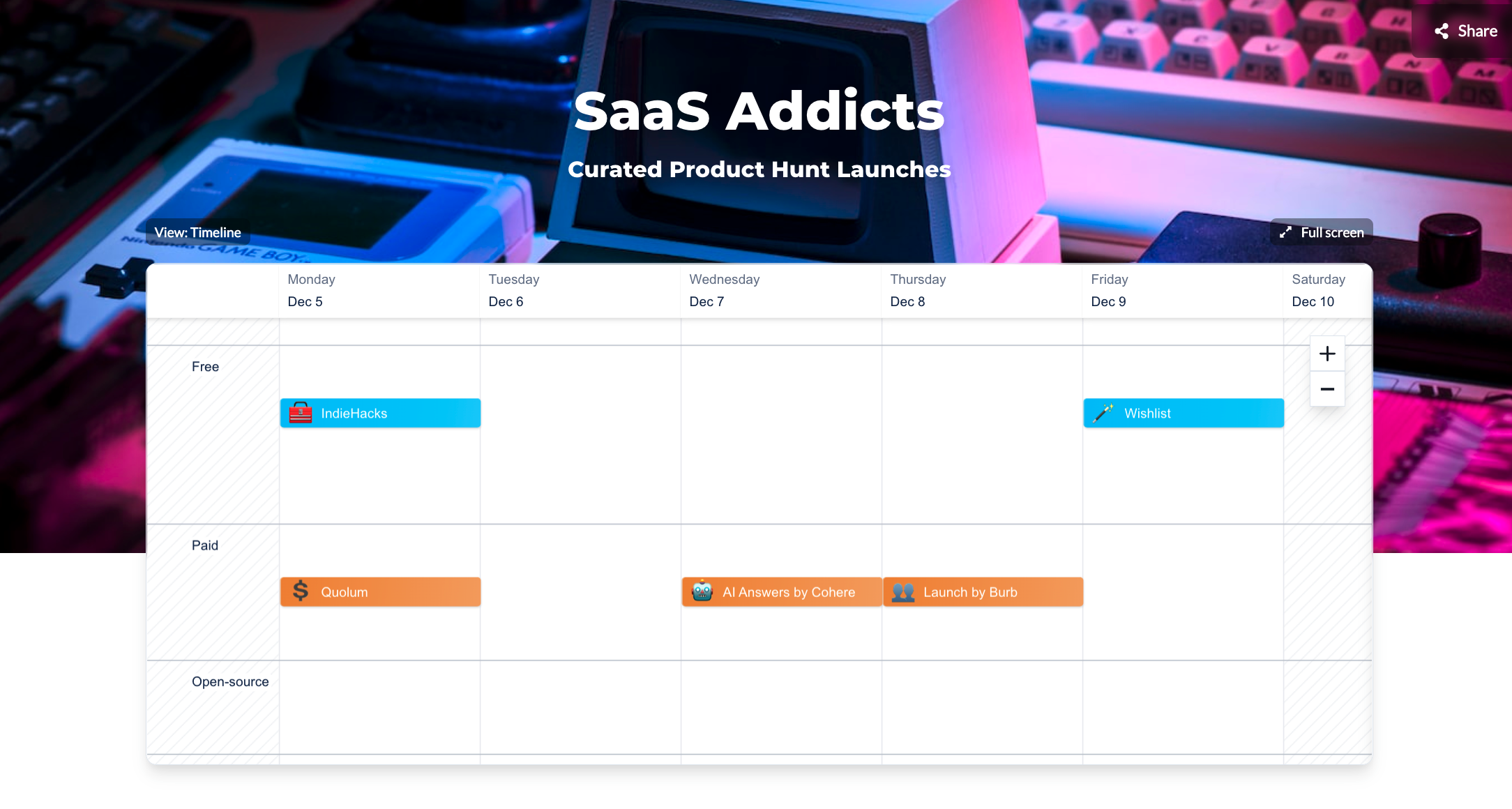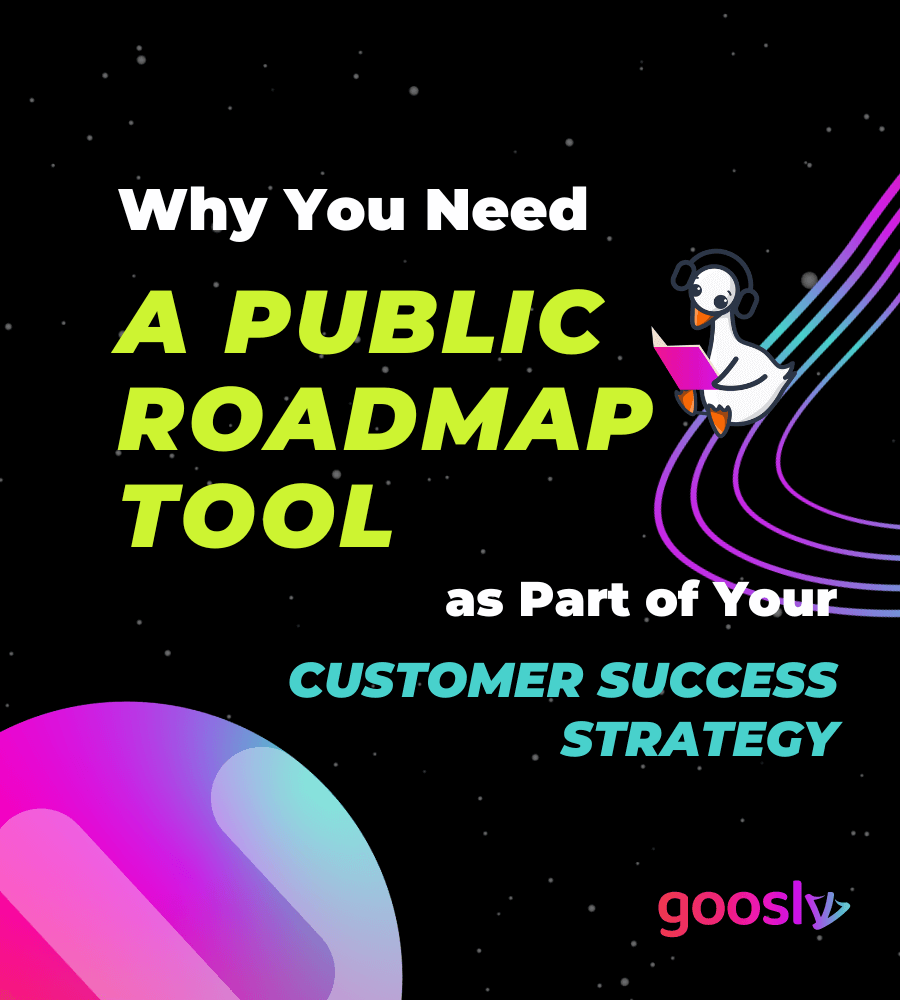What you'll get from this article:
- The importance of having a clear software development roadmap
- What benefits does a product roadmap tool offer stakeholders and team members alike
- How to avoid common pitfalls when creating or following public roadmaps
A roadmap is a high-level plan that shows the steps necessary to achieve a specific goal. It can be used in business, software development, or other areas where planning and execution are essential.
This blog post will discuss a product roadmap and how it can be used in software development. We will also give you a brief overview of Goosly, an online tool that makes creating roadmaps easy and fun!
1. What is a roadmap in software development, and what are its key components?
A roadmap in software development is a high-level plan that shows the various stages of a project and how they are related. It can help you visualize the big picture and ensure all the pieces move in the right direction.

Software developers often use public roadmaps to keep stakeholders informed about the project's progress and solicit customer feedback. A roadmap can help stakeholders understand what has been completed, what is being worked on, and what still needs to be done. It can also help them plan future tasks and ensure that the project moves in the right direction.

The critical components of a roadmap include the following:
1. The project's objectives, including what you hope to achieve.
2. The stages of the project, including the start and end dates.
3. The dependencies between stages, including what needs to be completed before a stage can begin.
4. The resources required for each stage.
5. The risks and opportunities associated with the project.
A software development roadmap is vital for developing a clear plan and timeline for a software project. The key components of a product roadmap listed above will help developers to stay on track and ensure that their project is completed successfully.

For example, tracking phases will help to ensure that all the necessary requirements are gathered before starting development. Also, steps like the beta testing phase in your roadmap will help catch any last bugs or issues before the software is released to the public.
In addition, having a clear roadmap can help keep stakeholders informed about the project's progress and avoid any misunderstandings throughout the product development process.
2. How do you create a software development roadmap for your business or project stakeholders?
A software development roadmap is a high-level plan showing the various stages of a software development project and the tasks that need to be completed to reach the end goal. It's important to create a roadmap for stakeholders to keep them informed of the project's progress and ensure everyone is on the same page.

There are many different ways to create a software development roadmap, but here are some tips on how to get started:
1. Define the project goals and objectives. This may seem like an obvious step, but it's important to understand what you want to achieve before you start planning.
2. Outline the stages of the project. This will help you visualize the overall process and identify any potential roadblocks.
3. Create a task list for each stage of the project. This will give you a better idea of what needs to be done and when.
4. Assign deadlines to each task. This will help keep the project on track and stay on schedule.

5. Update the roadmap as needed. As the project progresses, you may need to change the plan. Be sure to update the roadmap accordingly, so everyone knows what's happening.
Google, Microsoft, and Apple are notable software development companies that use public roadmaps. These companies release their roadmaps to the public to keep stakeholders informed of their progress and to receive feedback from the community. Having a public roadmap also allows these companies to show transparency and build trust with their customers.
Many SaaS companies also use Goosly, an online tool that makes creating roadmaps easy and fun. With Goosly, you can create a roadmap for your business or project stakeholders in just a few minutes.

Goosly's simple interface makes it easy to create a roadmap with just a few clicks. You can add stages, tasks, and resources to the timeline quickly and easily. Plus, you can share your roadmap with stakeholders and team members to get feedback and ensure everyone is on the same page.
With Goosly, you can create beautiful roadmaps that are easy to understand and share with others. Try it today and see how easy it is to plan your next software development project!
3. Why is it essential to have a clear roadmap in software development, and what benefits does it offer stakeholders and team members?
In software development, it is essential to have a clear roadmap to ensure that everyone is on the same page and knows what is expected of them. A well-defined roadmap can provide several benefits for stakeholders and team members alike.
For stakeholders, a roadmap can help them understand the project's overall vision and how each phase and milestone will contribute to achieving that vision. It can also help them to make decisions about whether or not to invest in the project.
Internal stakeholders or product managers may also review the product roadmap to consider a particular feature request. Public roadmap tools are great platforms for playing with feature ideas and developing a strategic plan for software and product launches.

Creating your own public roadmap for team members can give them a sense of direction and help them prioritize tasks. It can also help them to identify potential risks and dependencies. Having a clear roadmap allows team members to work more effectively together and avoid conflicts caused by unclear expectations.





